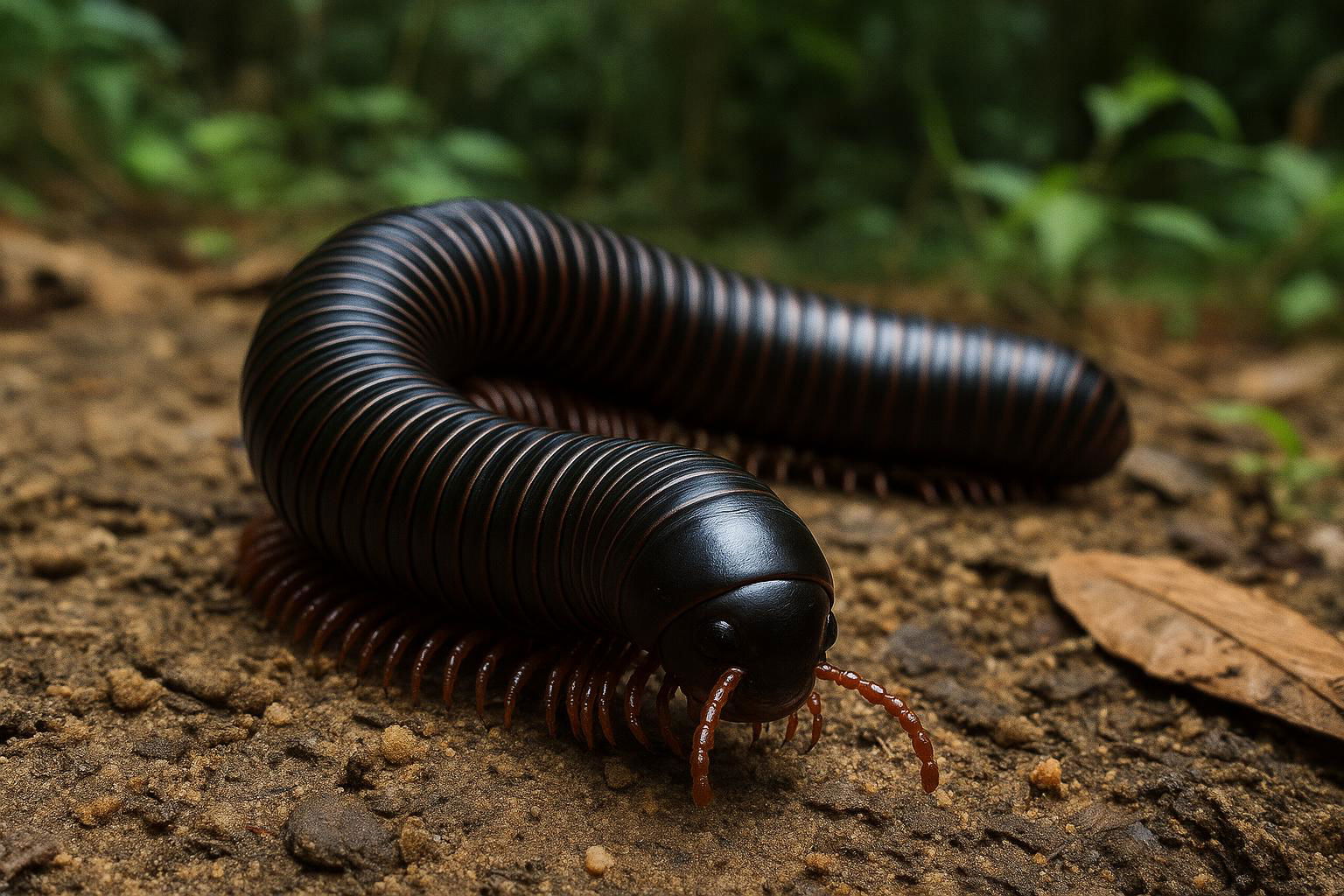
Giant African Millipede
Archispirostreptus gigas
The Giant African Millipede, scientifically known as Archispirostreptus gigas, is one of the largest millipede species in the world, native to the rainforests and moist savannas of East Africa. Typically measuring up to 33 centimeters (about 13 inches) in length, these impressive arthropods are characterized by their long, cylindrical bodies composed of 30 to 40 segments, each housing two pairs of legs. Their exoskeleton is a shiny, dark brown or black, providing them a distinctive and formidable appearance.
Despite their intimidating size and appearance, Giant African Millipedes are gentle and non-venomous creatures. They play a crucial ecological role as decomposers, feeding primarily on decaying plant matter, dead leaves, and other organic material, which helps recycle nutrients back into the soil. Their slow, methodical movement involves an undulating wave-like motion that propels them through their environment.
These millipedes have a unique defense mechanism: when threatened, they can secrete a harmless, slightly toxic liquid from their sides, which deters predators. They're also known to curl into a tight coil to protect their vulnerable underbelly.
Giant African Millipedes are fascinating creatures in the world of entomology and often serve as popular pets or educational specimens due to their docile nature and relatively simple care requirements. Their role in their native habitats as recyclers of organic matter highlights their importance in maintaining ecological balance.

 All Species & Breeds
All Species & Breeds
 Highland Cattle
Highland Cattle
 Miniature Donkeys
Miniature Donkeys
 All Species Directory
All Species Directory
 Highland Cattle in Virginia
Highland Cattle in Virginia
 Miniature Donkeys in Texas
Miniature Donkeys in Texas












